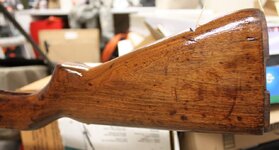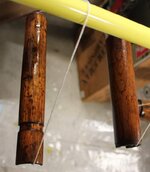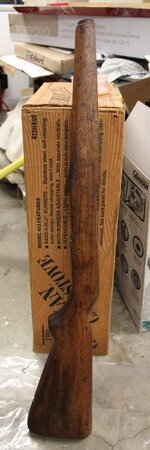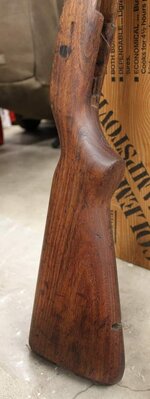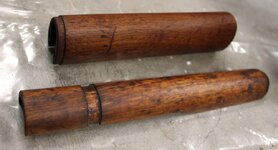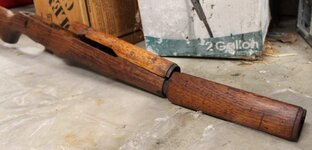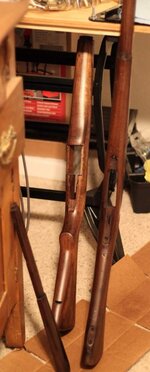Staff Member
Bronze Supporter
- Messages
- 4,217
- Reactions
- 5,052
- Thread Starter
- #41
Very nice, Ron, i keep seeing all these beautifully finished stocks, realising the big difference with mine, is how smooth they are, lacking in the wood damage so prevalent on mine.
I'm thinking 400 grit to even out the finish tomorrow night; i will then apply the oil sparingly again, with my fingers, and then sand again before leaving to dry for another night.
Last info for tonight, i checked out the 'far side' of the stock just now, and it's much darker and more uniform than the near side, which is kind of odd, but it's clearly the way this side should go, it seems to be the case that i should work with the sand paper and some oil/wet sanding to even this all out.
I'm thinking 400 grit to even out the finish tomorrow night; i will then apply the oil sparingly again, with my fingers, and then sand again before leaving to dry for another night.
Last info for tonight, i checked out the 'far side' of the stock just now, and it's much darker and more uniform than the near side, which is kind of odd, but it's clearly the way this side should go, it seems to be the case that i should work with the sand paper and some oil/wet sanding to even this all out.






